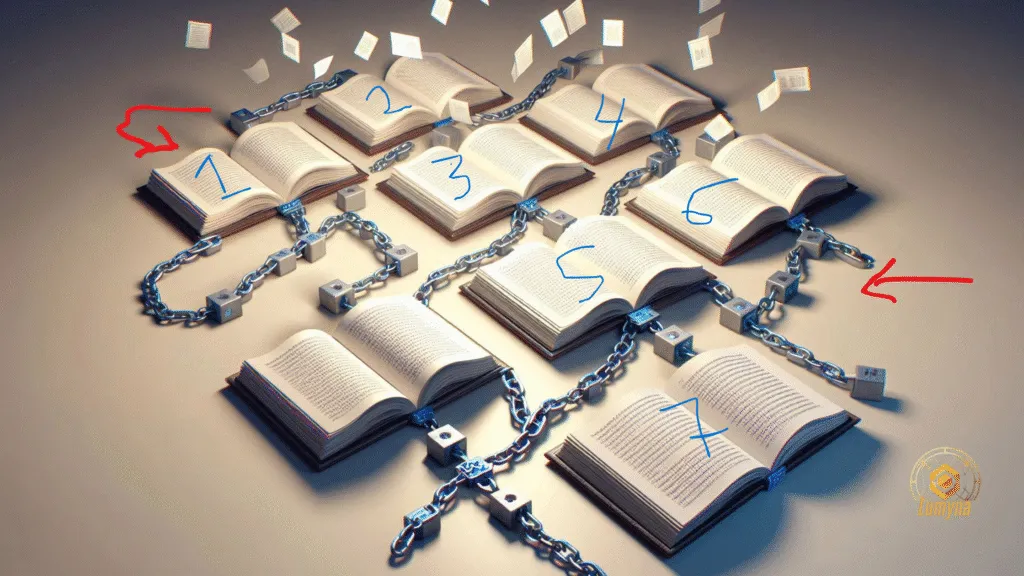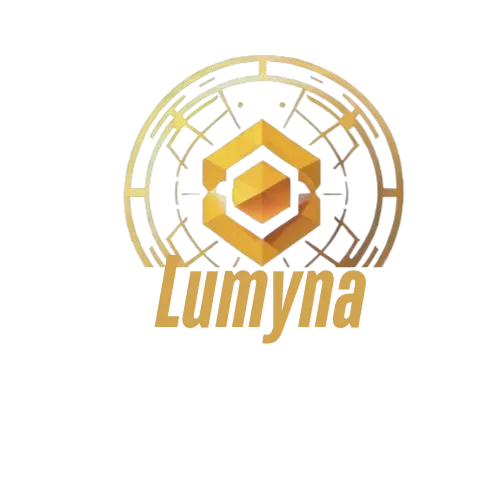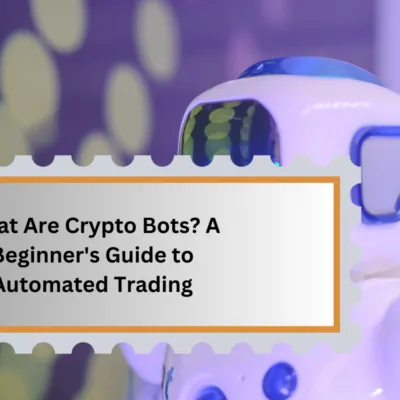- What Is Blockchain? A Beginner-Friendly Definition
- How Does Blockchain Work? The Basics
- Steps of a Blockchain Transaction:
- Why Is Blockchain Important? Real-World Uses
- Industries Blockchain Is Transforming:
- Blockchain and Cryptocurrency: The Connection
- Benefits and Challenges of Blockchain
- Conclusion
- FAQ: Common Blockchain Questions
Blockchain technology is the foundation of cryptocurrency, powering systems like Bitcoin with a secure and transparent way to record transactions. Imagine a shared digital notebook, accessible to everyone in a network, where each entry is locked in place, impossible to change or erase.
Once information, like a payment, is added, it’s stored forever, visible to all but protected from tampering. This simple yet powerful idea ensures trust without needing banks or middlemen. Blockchain began with Bitcoin in 2009, solving the problem of sending money online without a central authority.
Today, its uses stretch far beyond crypto, from tracking goods in supply chains to securing medical records.
The excitement around blockchain comes from its potential to make processes faster, safer, and more open in countless industries.
For those new to the concept, this guide will explain blockchain basics clearly, showing why it matters and how it works.
No technical background is needed, just curiosity. If you’re inspired to explore crypto, platforms like Coinbase, Binance, Kraken can help you start safely. Ready to learn what makes blockchain so revolutionary?
Let’s dive into blockchain explained, step by step.
What Is Blockchain? A Beginner-Friendly Definition
Blockchain is a decentralized digital ledger that records transactions across a network of computers, offering a secure and transparent way to store information without a central authority.
Imagine a shared notebook where everyone in a group holds an identical copy. Each page, known as a block, captures details, like payments, contracts, or shipments, written in a way that cannot be erased or changed. Once a page is full, it’s locked with a special code and linked to the next page, forming a chain of blocks that grows over time.

This design ensures blockchain is transparent, letting all participants view the records, and tamper-proof, as altering one block would mean changing every copy across thousands of computers, a nearly impossible task.
Unlike systems controlled by banks or governments, blockchain has no single owner. Instead, a network of computers, called nodes, collaborates to verify and update the ledger, keeping it accurate and fair. While blockchain is the backbone of cryptocurrencies like Bitcoin, its potential reaches far beyond digital money.
Businesses use it to track products in supply chains, ensuring items like food or medicine are genuine. Governments explore it for secure voting systems, and hospitals rely on it to protect patient data, streamlining processes and building trust.
By eliminating middlemen, blockchain creates a system where information flows openly yet remains safe, reshaping how we handle everything from finance to records management.
Core Features of Blockchain:
- Decentralized: No one entity controls it; the network shares the workload evenly.
- Secure: Encryption safeguards data, making unauthorized changes extremely difficult.
- Transparent: All records are visible to participants, promoting honesty and trust.
How Does Blockchain Work? The Basics
Blockchain technology operates as a decentralized system that records transactions securely across a network of computers, ensuring trust without a central authority.
When someone sends cryptocurrency, such as Bitcoin, the process begins with a transaction request. This request is broadcast to a network of computers, known as nodes, which work together to confirm the details.
Each node checks the transaction’s validity—verifying the sender has enough funds and the request is legitimate.
Nodes reach agreement through a process called consensus, where they collectively confirm the transaction matches the network’s records.
Once verified, the transaction is grouped with others into a block, similar to a page in a ledger.
To secure the block, a unique code, created through a process called hashing, locks the data, making it tamper-proof. This block is then connected to the previous one, forming a chain of records that grows over time.
Every node updates its copy of the blockchain, keeping the ledger consistent across the network.
This method ensures transactions are permanent, transparent, and protected, as altering one block would require changing all subsequent blocks on every node, a nearly impossible task.
Beyond cryptocurrency, this system supports applications like tracking goods or verifying contracts, offering speed and openness compared to traditional methods.
Steps of a Blockchain Transaction:
- Transaction Initiated: A user requests to send cryptocurrency, such as Bitcoin.
- Verification by Nodes: Network computers check the transaction’s details for accuracy.
- Added to a Block: The verified transaction joins others in a new block.
- Block Linked to the Chain: The block is sealed and connected to the previous block.
| Aspect | Blockchain | Bank |
|---|---|---|
| Control | Decentralized | Centralized |
| Speed | Minutes (varies) by chain | Hours to days |
| Transparency | Public ledger | Private records |
Why Is Blockchain Important? Real-World Uses
Blockchain technology is revolutionizing how trust and efficiency function across diverse sectors, offering a secure, transparent way to manage information without relying on central authorities.
Its core strength lies in creating a shared digital ledger that records data—such as payments or contracts—in a manner that all participants can view yet none can alter without agreement from the network.
This fosters confidence in systems where accuracy and fairness matter most. In cryptocurrency, blockchain powers Bitcoin and Ethereum, allowing people to send money globally in minutes, bypassing banks and their high fees.
This speed and cost-saving potential make digital currencies appealing for everyday transactions.
Beyond finance, blockchain transforms supply chains by tracking products, like fresh produce or luxury goods, from their source to the store shelf. This ensures items are genuine, reducing fraud and building consumer trust.
In healthcare, blockchain secures patient records, enabling hospitals to share vital data with authorized providers while keeping it private, which enhances treatment outcomes and protects sensitive information.
For voting, blockchain creates tamper-proof systems, recording ballots in a permanent, verifiable way to prevent fraud and strengthen democratic processes.
These examples highlight blockchain’s ability to streamline operations, cut costs, and promote openness across industries.
For Retail Investors, blockchain’s expanding role signals opportunities—not only in cryptocurrencies but also in businesses leveraging this technology to innovate. Companies adopting blockchain for logistics or data security are poised for growth, making it a compelling area to watch.
y removing intermediaries and ensuring reliability, blockchain is paving the way for a future where systems are more equitable and efficient, reshaping how industries operate and creating value for those who engage early.
Industries Blockchain Is Transforming:
- Finance: Facilitates faster, lower-cost global transfers without banks.
- Logistics: Ensures transparent tracking of goods from origin to delivery.
- Healthcare: Protects private data sharing for improved, secure patient care.
- Real Estate: Simplifies contracts with clear, unchangeable records.
Blockchain and Cryptocurrency: The Connection
Blockchain serves as the essential foundation for cryptocurrencies, enabling secure, transparent transactions without the need for banks or intermediaries.
It functions as a digital ledger, shared across a network of computers, that records every cryptocurrency transfer in a way that is permanent and verifiable.
For Bitcoin, blockchain was created to act as a digital currency system, allowing people to send money directly to one another, anywhere in the world, without relying on a central authority.
Each transaction is stored in a block, locked with a unique code, and linked to the previous block, ensuring no one can alter the record.
Ethereum takes this further by using blockchain to support smart contracts—self-executing agreements that automatically carry out tasks, like transferring funds when conditions are met.
This makes Ethereum’s blockchain a platform for building applications, such as lending or trading systems, beyond simple payments.
For Retail Investors, this connection matters because blockchain eliminates middlemen, reducing costs and enabling global access to financial opportunities.
Whether sending Bitcoin to a friend overseas or earning interest through Ethereum’s apps, blockchain ensures these actions are safe and efficient.
Its reliability drives cryptocurrency’s value, offering investors a chance to engage in a growing, bank-free financial system that prioritizes user control and openness.
| Feature | Bitcoin Blockchain | Ethereum Blockchain |
|---|---|---|
| Main Use | Digital currency | Smart contracts, apps |
| Speed | Slower (~10 mins/block) | Faster (~15 secs/block) |
| Flexibility | Limited | Programmable |
Benefits and Challenges of Blockchain
Blockchain technology brings remarkable advantages that transform how industries operate, while also presenting hurdles that temper its adoption.
Its security stands out as a key strength, with data locked through encryption, ensuring that transactions or records—whether for cryptocurrency payments or sensitive documents—resist tampering or hacking.
This protection fosters trust in systems where safety is critical. Transparency adds further value, as blockchain’s ledger is accessible to all participants, allowing anyone to verify details, such as a product’s origin or a financial transfer, without relying on a central authority.
Cost savings are significant, particularly in finance, where blockchain eliminates intermediaries like banks, reducing fees for global payments or contract agreements. For example, sending money overseas via Bitcoin avoids hefty wire charges.
These benefits make blockchain appealing for Retail Investors, signaling opportunities in crypto and innovative companies streamlining processes.
However, blockchain faces notable challenges. Energy consumption is a major concern, as some networks, like Bitcoin’s, require vast amounts of power to verify transactions, rivaling the usage of entire nations.
This raises environmental questions and operational costs. Complexity poses another barrier, as understanding and using blockchain—whether setting up wallets or navigating apps—can overwhelm beginners unfamiliar with digital systems.
Regulatory uncertainty also looms, with governments worldwide debating how to oversee blockchain and cryptocurrencies.
Laws vary, creating risks for users and businesses, such as unexpected taxes or restrictions. These challenges highlight the need for cautious engagement, balancing blockchain’s promise with its evolving realities.
- Benefits:
- Enhanced Security: Encryption makes hacking or altering data extremely difficult.
- Lower Costs: Removing intermediaries reduces fees for transactions and contracts.
- Global Access: Anyone with internet can participate, no bank account required.
- Challenges:
- High Energy Consumption: Verifying transactions can use immense power.
- Learning Curve for Beginners: Using blockchain requires new skills and knowledge.
- Evolving Laws: Unclear regulations create uncertainty for users and businesses.
Conclusion
Blockchain technology is a game-changer, offering a secure, transparent way to record and share data without relying on middlemen.
From powering cryptocurrencies like Bitcoin to revolutionizing supply chains, finance, and even healthcare, its potential is vast.
At its core, blockchain’s decentralized and tamper-proof nature builds trust in a digital world, making it a foundation for innovation.
For beginners, diving into blockchain doesn’t have to be daunting—start small by exploring a trusted platform like Coinbase to buy your first crypto or secure your assets with a Ledger hardware wallet.
These simple steps can open the door to understanding blockchain’s real-world impact.
Ready to get starte d?
Blockchain basics are just the beginning. Whether you’re curious about crypto or want to explore blockchain’s broader applications, there’s no better time to learn.
Blockchain isn’t just technology—it’s a new way to trust and connect. Take that first step today and discover why blockchain, explained simply, is reshaping our future!
FAQ: Common Blockchain Questions
Who Can Use Blockchain Technology?
Anyone with internet access can use blockchain, from individuals investing in cryptocurrencies to businesses streamlining supply chains or tracking goods. Discover practical first steps in our Getting Started with Blockchain (#getting-started-with-blockchain-what-beginners-can-do) guide or explore crypto with Coinbase.
What Is the Main Purpose of Blockchain?
Blockchain’s primary purpose is to record transactions securely and transparently without intermediaries like banks, ensuring trust and efficiency. Learn the fundamentals in our What Is Blockchain? (#what-is-blockchain-a-beginner-friendly-definition) section for a clear, beginner-friendly explanation.
When Was Blockchain First Used?
Blockchain was first introduced in 2009 with Bitcoin, developed by the pseudonymous Satoshi Nakamoto as a decentralized ledger for crypto transactions. Read more about its origins in Blockchain and Cryptocurrency (#blockchain-and-cryptocurrency-the-connection).
Where Is Blockchain Used Besides Crypto?
Beyond cryptocurrencies, blockchain is used in supply chain management, healthcare data security, smart contracts, and more, enhancing transparency and efficiency. Explore real-world applications in Why Is Blockchain Important? (#why-is-blockchain-important-real-world-uses).
Why Is Blockchain Considered Secure?
Blockchain’s security comes from its decentralized structure and cryptographic encryption, making it nearly impossible to alter or hack without consensus. Dive into the technical details in How Does Blockchain Work? (#how-does-blockchain-work-the-nuts-and-bolts) for a closer look at its mechanics.
How Can Beginners Learn More About Blockchain?
Beginners can start by experimenting with crypto on platforms like Coinbase or Ledger for secure storage, or take online courses to grasp blockchain basics. Get practical tips and resources in Getting Started with Blockchain (#getting-started-with-blockchain-what-beginners-can-do).




